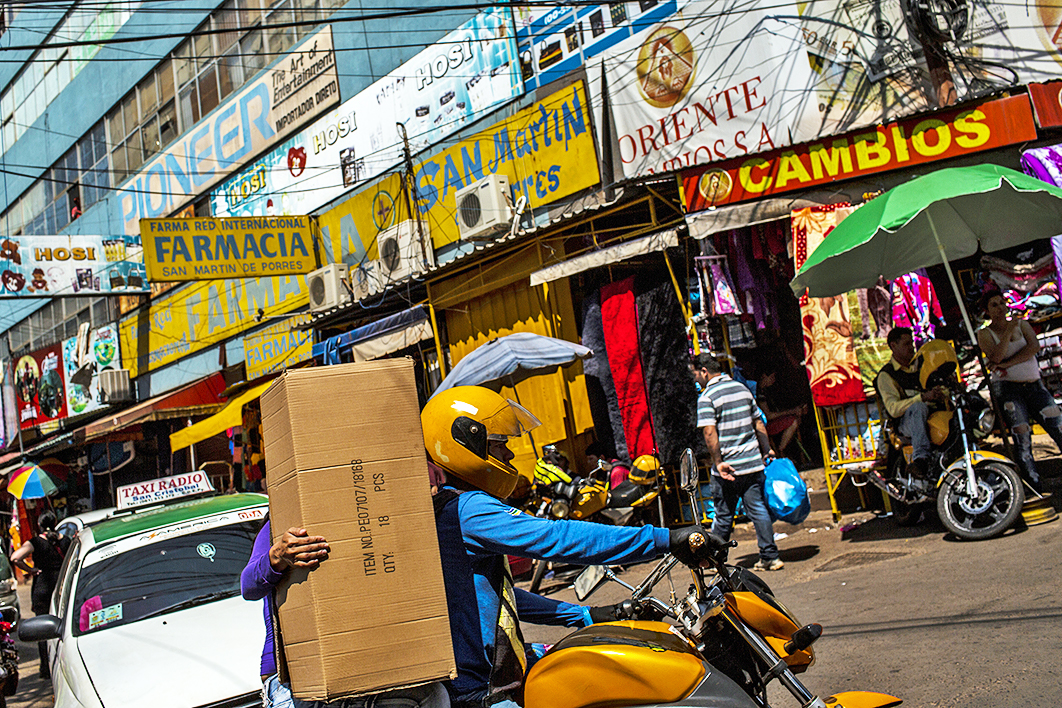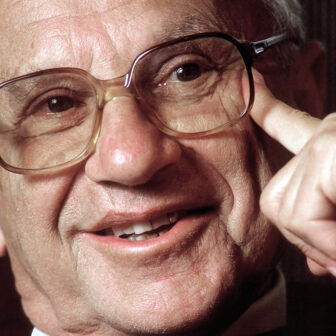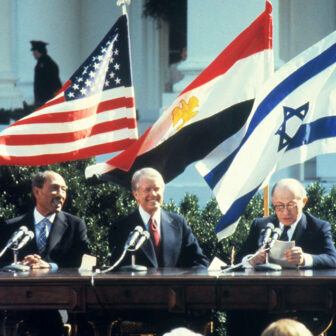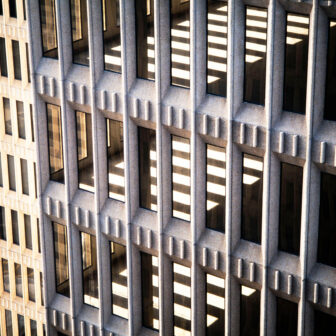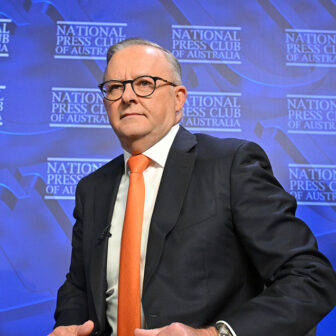I have two options, my taxi driver tells me. “You can either wait here in the queue” — he points towards the unbroken column of stationary vehicles on the Friendship Bridge — “or we follow him.” The yellow-vested motorcyclist he is proposing we follow is part of an illegal rompe filas (queue breaker) scheme that operates with the complicity of Ciudad del Este’s Municipal Traffic Police. The police are bribed to let queue jumpers through.
Faced with four scorching hours on the bridge that ties Paraguay’s Ciudad del Este to Brazil’s Foz do Iguaçu, I yield. Several clumsy three-point turns later, my driver manages to get off the bridge and begins tailgating the motorcyclist through the clogged back alleys of Ciudad del Este. “Yes, it’s illegal, but it’s the only way to reach Foz do Iguaçu before dark,” he says as he hands the yellow-vested motorcyclist 80,000 guaraní (about A$17) in Paraguayan cash. “This is frontier existence,” my taxi driver growls as we leave Ciudad del Este behind.
With a population of just under 300,000, Ciudad del Este — the City of the East — is the largest of the three metropolises that form South America’s Triple Frontier. Brazil’s Foz do Iguaçu (Iguazu River Mouth) and Argentina’s Puerto Iguazu (Iguazu Port) make up the trio. It is here that the murky waters of the mighty Paraná and Iguaçu rivers meet; nearby are the Iguaçu Falls.
“There’s a funny story about this bridge,” says my taxi driver, a Paraguayan. “It has been said that for its construction the Brazilians put in the money and the Paraguayans the friendship.” Built in 1965, the 553-metre bridge’s clogged three lanes keep Ciudad del Este and Foz do Iguaçu tightly entangled. On normal days, between 30,000 and 40,000 people and around 20,000 vehicles cross over it.

Smuggling hub: South America’s Triple Frontier. Foreign Affairs
Ciudad del Este, Paraguay’s second city is the world’s third-largest free-trade zone after Miami and Hong Kong. Through a process of “commercial triangulation,” it has become one of the most important commercial centres in the world, importing products from third countries for sale in the bigger markets of Argentina and Brazil. An estimated 98 per cent of the products that arrive in the Triple Frontier — mainly from China — go to Brazil, Latin America’s largest economy.
Alfredo Stroessner, the murderous military dictator who ruled Paraguay between 1954 and 1989, founded the city in 1957. He fancied a trading garrison next to its giant neighbour, Brazil, and legend has it that he was happy for it to become a centre of smuggling and contraband. What is definitely true is that Ciudad del Este’s illegal trade is massive, amounting to between US$10 billion and US$15 billion a year, according to Guillermina Seri, a political scientist at Union College in New York.
A 2015 report from Brazil’s Institute of Economic and Social Development of Borders calculated that around 15,000 people are “directly involved in smuggling, specifically in the Foz do Iguaçu region.” That’s hardly surprising given that the International Labour Organization claims, “the only thing that grows [in Paraguay] is unemployment.”
As twenty-four-year-old Leandro tells me, he has “tried and tried” to get legal work. Cooling down with the ubiquitous tereré, an iced herbal tea slurped through a golden straw, he is about to make the final crossing of the day from his native Foz do Iguaçu to Ciudad del Este. He is a sacoleiro, an across the border “bag carrier,” and crosses the bridge “at least six times a day.”
Leandro buys all sorts of goods on the Paraguayan side — from clothing to electrical gadgets, much of it counterfeit — and resells them at a higher price in Foz do Iguaçu. Officially he is allowed to bring across a maximum of US$300 of goods each month. He has been doing this “for a while,” he tells me in Portuñol, a mix of Spanish and Portuguese, and he knows that “only 10 per cent of the luggage that crosses the bridge to Foz do Iguaçu is ever checked.”
Last April officials from Ciudad del Este seized counterfeit goods worth more than US$600,000 dollars. “It is just for the show,” says Leandro. “From time to time the police from there” — he points at Ciudad del Este — “bust some of the shops to show they are doing their job.”
Contraband and counterfeiting — of electronic equipment, computers, sports shoes, drinks, toys, watches, textiles, perfumes and cigarettes — have been normalised in Ciudad del Este. According to a 2017 report from the Office of the US Trade Representative, “The border crossing at Ciudad del Este and the city itself have long been known as a regional hub for the distribution of counterfeit and pirated products.” Organised crime groups are reported to be responsible for most of the trade.
An essential part of the criminal equation is the fact that Paraguay is the second-most corrupt country in South America after Venezuela, according to a 2016 Transparency International report, which notes: “international diagnostics show that corruption in Paraguay is widespread and involves multiple sectors of government and private enterprise.”
Under the cover of this venality, the Triple Frontier has become the blood-spattered arena of the two largest Brazilian drug cartels, the Primer Comando de la Capital (First Capital Command) and the Comando Vermelho (Red Command). “They are at war, fighting for the control of the area and they have brought terror to the Triple Frontier,” Geraldine Cuervo, a researcher at Colombia’s Nueva Granada Military University, tells me. “These two criminal specialise in the contraband of arms, electronic products, trafficking of people – mainly women and children – and the smuggling of drugs and cigarettes,” she said.
Moisés knows all about cigarette smuggling. “I started at fifteen,” twenty-two-year-old Moisés tells me. He scratches out a living as a pasero — or smuggler of goods — mainly bringing cigarettes from Ciudad del Este to Foz do Iguaçu. Tobacco is cheaper on the Paraguayan side of the border than in Brazil and Argentina. “You sense when you will be caught,” Moisés tells me. “When you look to the Brazilian border and see the cops a bit jumpy the only thing you can do is to throw the boxes to the Paraná River and sprint back to Paraguay.” And the next day, he says, “you try again.”
The smuggling of cigarettes from Paraguay to Brazil is at an industrial scale — twenty to thirty billion cigarettes per year. “It used to be easier, we just crossed the bridge,” says Moisés. “But the Brazilians are getting tough.” Now he does his business via the Paraná River’s clandestine ports, along with most of the large-scale contraband.
The Brazilian police have identified fourteen illegal ports in Foz do Iguaçu. “The use of ports became increasingly common after the Brazilian government tightened the surveillance in Brazil’s border with Paraguay, mainly around the Friendship Bridge,” says Eric Gustavo Cardin, a sociologist at The Western Paraná State University.
Moisés also admits to having done “a little bit of marijuana passing.” Like cigarettes, marijuana is abundant in Ciudad del Este: Paraguay is the world’s fourth-largest producer of the narcotic, according to the Office of the United Nations on Drugs and Crime. It is estimated that 80 per cent of Paraguay’s production of hierba maldita — “reviled grass” as it is called around here — is destined for Brazil; the rest ends up in the other neighbouring countries.
What Moisés hasn’t done — “that is a bit too risky” — is work in another highly profitable business on the Triple Frontier: arms smuggling. At street stalls in Ciudad del Este you can buy whatever weapons you fancy — a Jericho revolver from Israel, perhaps, or an Italian Beretta — and ammunition from Mexico, Israel or South Africa.
“Paraguay illegally imports modern high-calibre automatic weapons as well as war weapons destined for the black market, or to resell them in Brazil and Argentina, where there is sustained demand,” according to a 2014 study by Costa Rica’s Arias Foundation for Peace and Human Progress. “In 2014 some 30,000 weapons of all kinds were introduced to Foz do Iguaçu, mostly destined for Brazilian criminal organisations such as the First Capital Command and the Red Command.”
After drugs and weapons, trafficking of humans is the third-most lucrative criminal business in the area. “The region is an international traffic route for human beings, which means that children and adolescents are vulnerable to recruitment for sexual exploitation,” says a report from the UNICEF’s regional office for Latin America and the Caribbean.
Many of the victims end up in brothels in Argentina, others in Chile, Bolivia, Mexico, Spain, South Korea, Japan and the United States, according to a 2014 report from the organisation End Child Prostitution and Trafficking, or ECPAT. “The Triple Frontier is an area where there is a considerable risk of sexual commerce affecting children and adolescents.”
The precariousness of employment and the structural weakness of the region’s educational system are regarded as factors behind the traffic. ECPAT’s report points the finger at “the lack of controls at border crossings, the absence of public policies, poverty, the complicity of neighbours, and police and political connivance.”
What you might not expect to find here, though, is a possible link to religiously charged violence. One of the largest groups among the Indian, Chinese, Korean and Arab traders who have settled and prospered here is the Lebanese community, most of whom fled their homeland’s civil war in the 1970s and 80s. Perhaps 35,000 of them — a blend of Maronite Christians and Muslims — are settled in Foz do Iguaçu and Ciudad del Este. Many come from the Beqaa Valley, a part of Lebanon where the Hezbollah militia enjoys strong support.
Divided only by the Friendship Bridge, the Muslim Lebanese community gathers around the three mosques. Ciudad del Este’s Al-Rashdeen mosque — with its impressive white, eighteen-metre-high dome — is on the Avenida Alejo García in the city’s east. I’m told that its construction was primarily funded by donations from both sides of the Paraná River.
“We want to demonstrate with our actions that we are good people,” Khaled Ghotme, president of the Arab Islamic Paraguayan Centre, tells me. “Paraguay is a hospitable country that received us; this temple is the fruit of our effort.” “We are good people” — I heard Muslims from Ciudad del Este say it over and over again. It was not just a statement; it was a request to stop mentioning them in the same breath as Hezbollah.
Allegations of a link between the Triple Frontier’s Muslim community and Hezbollah were first aired back in 1992. In that year the Israeli embassy in Buenos Aires, the Argentinean capital, suffered a suicide bombing attack in which thirty people, including the perpetrator, were killed. Two years later the Argentine Israelite Mutual Association centre in Buenos Aires was bombed, with eighty-five people killed and hundreds wounded.
After a lengthy investigation, Argentina’s Supreme Court of Justice determined that Hezbollah was behind the 1994 attack. “The investigation determined that the group had a presence in the Lebanese Shiite community located in the Triple Frontier zone, from where logistical assistance was provided to the attack,” says Mariano Cesar Bartolomé from the Joint War College of the Armed Forces of the Republic of Argentina. After 9/11, he says, there was “a re-evaluation of the Triple Frontier in general, and of Ciudad del Este in particular, as a node within the schemes of Islamist terrorism.”
Allegations about Hezbollah’s presence in the Triple Frontier come and go. Last year they returned with fury after the arrest in Foz do Iguaçu of Lebanese-born Ahmad Barakat, who had settled in Paraguay in 1985. According to a report from the Financial Information Unit of Argentina, the “Barakat Clan” had its operations centre in Ciudad del Este; the unit’s successful application to freeze assets described Barakat as a “terrorist financier.” The US State Department had described him as a “key terrorist financier in South America” in 2006.
The Lebanese, and other members of the Triple Frontier’s Muslim community, see the allegations of a wider connection with Hezbollah as unjustified and unproven. “We are part of the Brazilian culture. We are Brazilians who practise Islam. We don’t fund terrorists,” Mohamed Beha Rahal, president of the Sunni Muslim Charity Cultural Centre in Foz do Iguaçu, tells me.
Evidence that Hezbollah is operating more widely in the area still seems thin. Human rights lawyer Orlando Castillo is sceptical, viewing the allegations as “a narrative written from Washington.” The aim, he says, is “to construct the Triple Frontier into a terrorist hub that will allow the United States, at a certain moment, to establish a permanent military presence in the zone… The monster is created, the rumours are fed, and the control of the area is justified.”
“Now you’ve seen the place, you should watch the movie,” an old Paraguayan friend, Francisco, tells me when I get back to Asunción, Paraguay’s capital. He is referring to the Netflix film Triple Frontier, with Ben Affleck, Oscar Isaac and other Hollywood stars, released on 15 March. The plot: five members of a US special force military unit work out a scheme to steal US$75 million from one of the most powerful cartels in the world based, yes, in the Triple Frontier.
I haven’t seen it, and don’t plan to. But I have a minor spoiler: the movie was not shot in South America’s fabled Triple Frontier. It was shot in Hawaii, Colombia and California. Hence you won’t see in the movie what I saw there: a perpetually green and humid place where endless tales of human foibles, transgressions and kindnesses converge at the meeting of the Paraná and Iguaçu rivers and the coming together of Paraguay, Brazil and Argentina. •
